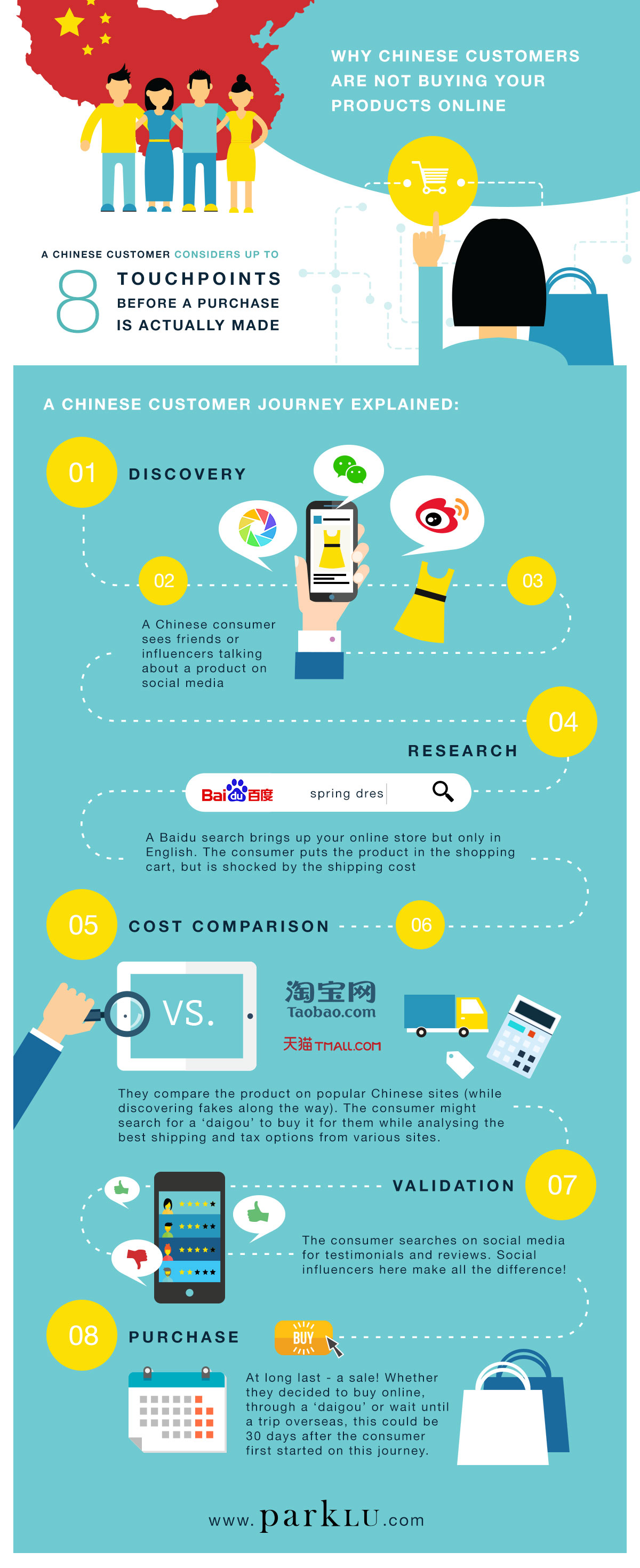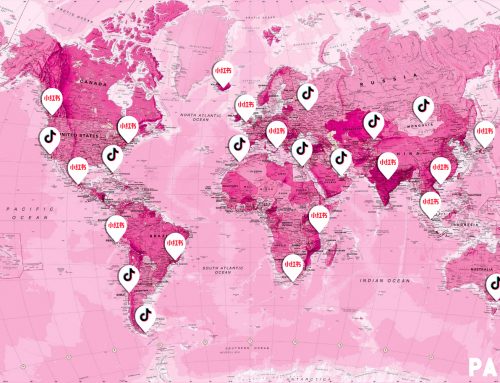How do you get China cross border e-commerce consumers to notice your product? The road to an online purchase is tricky for overseas brands and we sat down with our secret weapon to figure it out: PARKLU’s in-house shopping expert and account director Jessie Kang. Speaking from personal experience, she charts the course of Chinese e-shopping behaviour over half a dozen social touch points, hours of research and word of mouth below – just to find the best deal on a handbag. And after all that effort, she still hadn’t made a purchase after 30 days. Conversion’s a real bummer.
Stage 1: The Social Media Discovery
During her downtime on the way to work, Jessie scopes out the newest WeChat stories from her favourite Chinese fashion media and style bloggers. A gorgeous handbag by Thai brand BOYY catches her eye. Over the next two weeks, the bag is on the arms of editors at Fashion Week, global fashion bloggers like Margaret Zhang, saturating Jessie’s Weibo and WeChat feeds. She’s now inspired to buy it, which takes her to her next step…
Stage 2: Basic Research on Baidu
The first stop is Baidu, where Jessie tracks down the brand’s website to learn more. However boyybag.com is only in English, so online shoppers who don’t read English will turn to Taobao/Tmall for help. Jessie finds the bag and adds it to her shopping cart to see the damage on shipping costs, taxes and duties. It’s not pretty – there’s a 20% markup for shipping to China.
She wants to see it in person before committing, but the stockist list reveals there are no distribution points in mainland China. Luckily, I.T. and Lane Crawford carry it in Hong Kong so she makes a mental bookmark to see it on her next trip.
Stage 3: Price Comparison on Taobao
Next up is Taobao, where Jessie looks for other purchase choices. It’s a common Chinese shopping habit to Taobao something after finding it on social media since it usually shows the lowest prices. Jessie searches for BOYY and finds two options. She can:
1) Buy a fake at a fraction of the price or
2) Engage a reseller (daigou), an overseas buying agent who will ship it to her for just an extra 10%.
Note: If you find your brand has copycats on Taobao, it’s a sign that there’s demand for your product. Think about making investments in social and digital marketing in China.
Most China cross border e-commerce consumers know using a daigou agent is a risk, as sometimes they sell fakes rather than the real deal. Many prefer to use agents their friends have used before, regardless of whether or not an agent has good reviews on Taobao. While Jessie doesn’t trust random resellers, she does decide to follow some daigou WeChat accounts to stay notified of special offers.
Stage 4: Price Comparison on Multi-brand E-commerce Sites
Jessie begins the painstaking task of cross referencing multi-brand sites for availability and prices plus shipping and duties. This is where Jessie differs from most China cross border ecommerce consumers: she’s very familiar with cross-border e-commerce, as this is ParkLU’s jam. Even if top multi-brand e-commerce sites provide shipping to China, their Chinese traffic only ranges from 25% to 30% percent as awareness is still limited.
Stage 5: Detailed Research on Weibo, WeChat and Baidu
Jessie searches everywhere from Farfetch to Shopbop for the BOYY handbag. For Chinese shoppers who have never tried a new e-commerce site, they’ll turn to reviews on Weibo, WeChat (via Sogou) and Baidu. From there, they’ll learn about how returns are handled, value for money shipping options and what customer service is like. If no customer testimonials are floating around, searching for social proof becomes difficult. It’s then that influencer marketing makes all the difference.
After all that, Jessie’s online sale still isn’t guaranteed. She finds out that only the official brand site stocks the colour she wants. She patiently decides to wait until her Thailand trip over the National Holiday in October to buy it in person.
Think that’s a hell of lot of effort? Don’t even get us started on how the Chinese make travel plans.
In Summary
From Jessie’s experience, we’ve learned how important it is for overseas brands to have the right content in the right places for China cross-border e-commerce shoppers. Whether you’re targeting online or offline consumers, it’s something to keep in mind. The average Chinese shopper has a clickstream of at least 17 touch points; starting with the point of discovery, search for social proof, price comparison, research on e-commerce options and finally, checkout.
Naturally, the customer journey is much shorter if a brand is sold in China. It’s often less than a week for a sales conversion, since you cut out stages 4 and 5 if you’re on a major Chinese platform like JD or Tmall. Compare that to a month or more for China cross border e-commerce and it’s a no-brainer. If selling your products in China is an option for your brand, check out what we’ve got to say about Chinese e-commerce platforms.










Leave A Comment